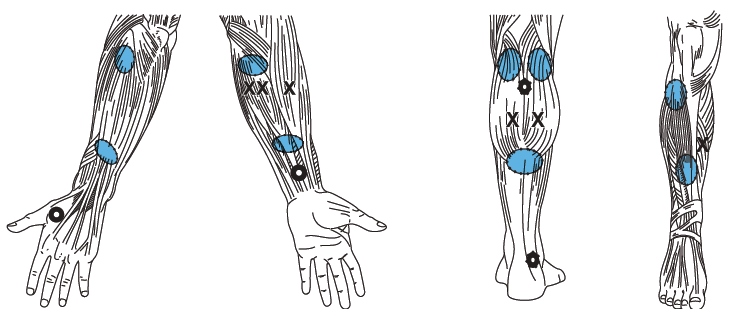Hypertonia is defined as excessive muscle tone which leads to stiffness with movement or inability to move a joint and often occurs with neurological conditions such as upper motor neuron lesions (CP, CVA, TBI, SCI, MS) and basal ganglia disorders (PD, Huntington
disease, Dystonia). While the terms spasticity and hypertonia are often used interchangeably, spasticity is actually a subtype of hypertonia in which muscle tone is increased by the speed of joint movement. (NIH, 2019)
Tone reduction treatment strategies are essential in order to improve range of motion (ROM) and optimize functional performance for those with hypertonia. The literature supports the use of biophysical agents as adjunctive tools to address hypertonia.
- Transcutaneous electrical nerve stimulation (TENS) in addition to physical interventions can lead to further reduction in chronic post-stroke spasticity. (Marcolino, 2018)
- Electroacupuncture, when applied within 180 days post stroke and combined with conventional routine care, has the potential of reducing spasticity in the upper and lower limbs, improving overall and lower extremity motor function, and increasing
independence with activities of daily living for patients with spasticity. (Cai, 2017)
Patterned Electrical Neuromuscular Electrical Stimulation (PENS)
Hypertonia affects the ability of muscle agonists and antagonists to contract in a normal, coordinated manner. PENS is a form of stimulation that can replicate the correct firing patterns of agonist and antagonist muscle pairs to reduce abnormal tone.

TENS-LVPC Motor Stimulation Treatment to acupuncture sites may increase cerebral blood flow in the hypo-perfused zone surrounding the site of an ischemic stroke, facilitating motor recovery and reduced spasticity.

Subthermal Ultrasound Golgi-tendon organs (GTOs) are mechanoreceptors that sense change in muscle tension and inhibit motor output, relaxing the muscle. Stimulation of these mechanoreceptors with ultrasound may induce relaxation of the muscle.

GTOs ![]() are located proximally and distally where the muscle and the tendon join. Treat both the agonist and the antagonist.
are located proximally and distally where the muscle and the tendon join. Treat both the agonist and the antagonist.
References:
NIH National Institute of Neurological Disorders and Stroke. (2019, March 27). Hypertonia Information Page. Retrieved from the NIH website: https://www.ninds.nih.gov/Disorders/All-Disorders
Hypertonia-Information-Page
Marcolino, M. A. Z., Hauck, M., Stein, C., Schardong, J., Pagnussat, A. S., Plentz, R. D. M. (2018). Effects of transcutaneous electrical nerve stimulation alone or as additional
therapy on chronic post-stroke spasticity: systematic review and meta-analysis of randomized controlled trials. Disability Rehabilitation, 16, 1-13 doi:10.1080/09638288
Cai, Y., Zhang, C. S., Liu, S., … Xue, C. C. (2017). Electroacupuncture for Poststroke Spasticity: A Systematic Review and Meta-Analysis. Archives of Physical Medicine and Rehabilitation, 98, 2578-89.
